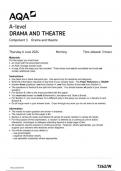Samenvatting
Summary: Introduction to Economics - Parkin: Economics - Readings for Week 7
This document contains a comprehensive summary of all readings for Week 7 - so, for both lecture 13 and 14 - of the first-year IRIO course Introduction to Economics at the RUG.
[Meer zien]














